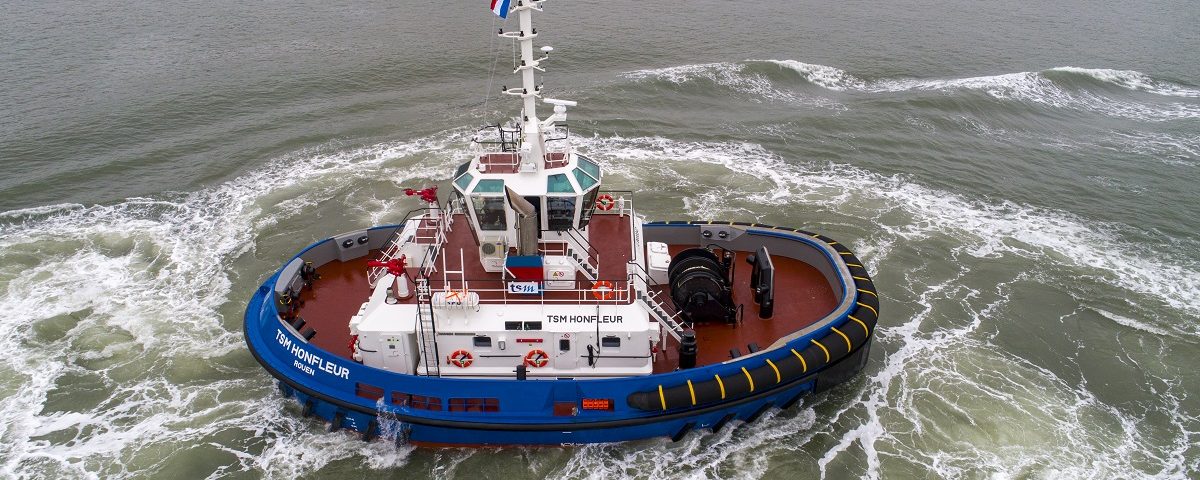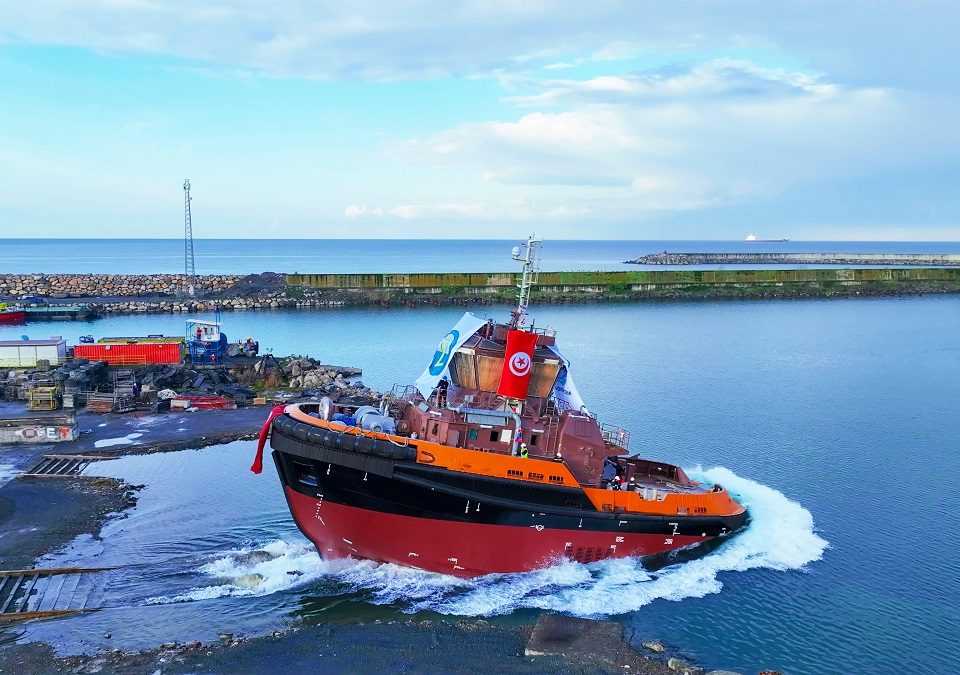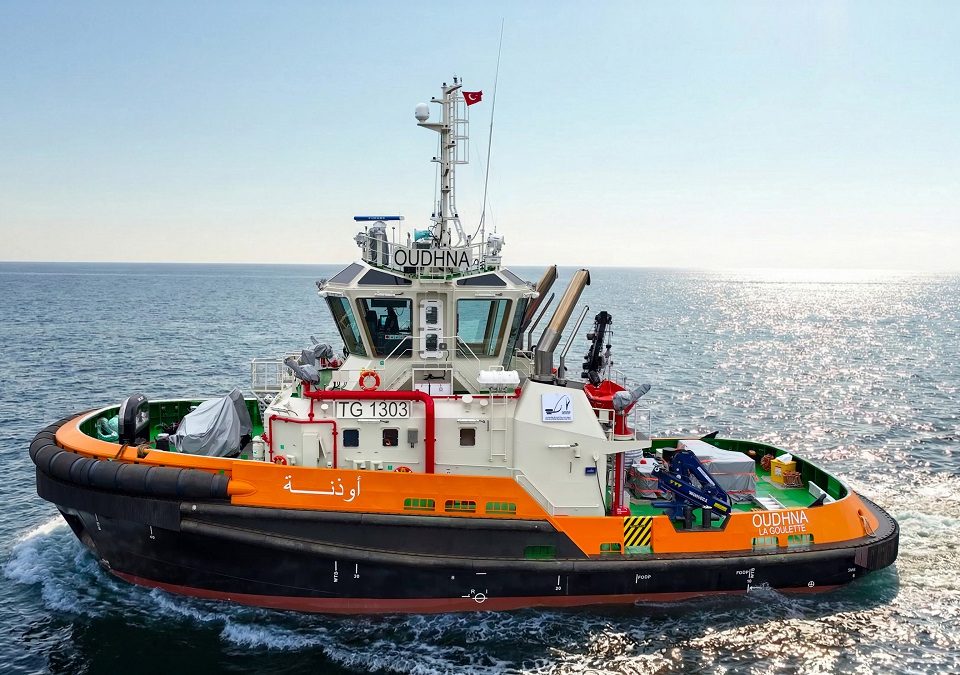This website uses cookies so that we can provide you with the best user experience possible. Cookie information is stored in your browser and performs functions such as recognising you when you return to our website and helping our team to understand which sections of the website you find most interesting and useful.
Damen delivers two RSD Tugs 2513 to TSM

Robert Allan Ltd. Design Z-Tech 30-80 George M Delivered
15/03/2021
Damen signs with South Port New Zealand for ATD 2412
18/03/2021Damen Shipyards Group has delivered two RSD Tugs 2513 to France-based Thomas Services Maritimes (TSM). The client was looking for the latest in tug technology and will operate the vessels on the River Seine in the port between the Ports of Rouen and Honfleur (HAROPA – Port de Rouen). The tugs will assist bulk cargo carriers, facilitating the export of cereals from the Port of Rouen – Europe’s number one grain terminal, tankers and all vessels inbound for Rouen.
Like Damen, TSM is a family company; something which played a part in Damen’s securing of the order, as Mr Loïc Thomas, CEO at the company explained, “We were looking for new tugs with the latest in vessel technology and we heard about Damen’s quality and reliability. We found that Damen shared our values as a family business, taking a long-term view that extends well beyond the straightforward delivery of new vessels. Damen provided us with a solution that perfectly met our needs, including environmental requirements we take into account for our investments.”
A part of this was adapting the standard, proven design of the RSD Tug 2513, lowering the vessels’ draft to ensure their suitability for sailing in the relatively shallow waters of the River Seine. Despite the modifications the tugs retain their over 80 tonnes bollard pull when towing – as demonstrated during seatrials.
The RSD Tug 2513, part of Damen’s Next Generation series, aims at delivering exceptional levels of safety, sustainability, efficiency and reliability.
As part of this, the tugs are prepared for IMO Tier III regulations, as Damen sales manager Joost van der Weiden explains, “At Damen we are on a mission to become the world’s most sustainable shipbuilder. The RSD Tug 2513 plays an important part in this. For example, the tugs are thoroughly prepared for IMO Tier III.
“Compliance can be achieved with the quick, simple, plug and play installation of the Damen Marine NOX Reduction System. This selective catalytic reduction technology delivers reduced NOX emissions of 70% compared to IMO Tier II. In this manner, TSM’s new vessels are suited not only to their operations today, but also for the future.”





